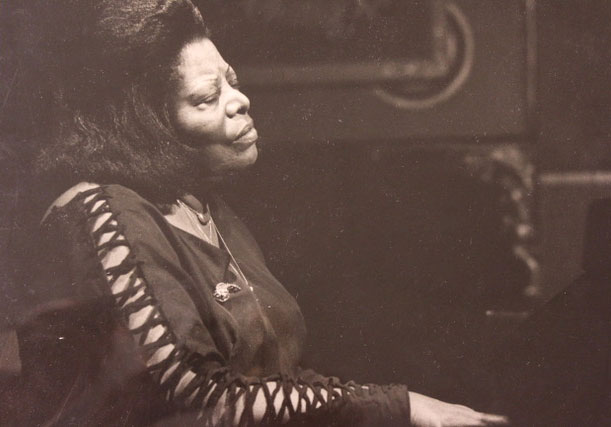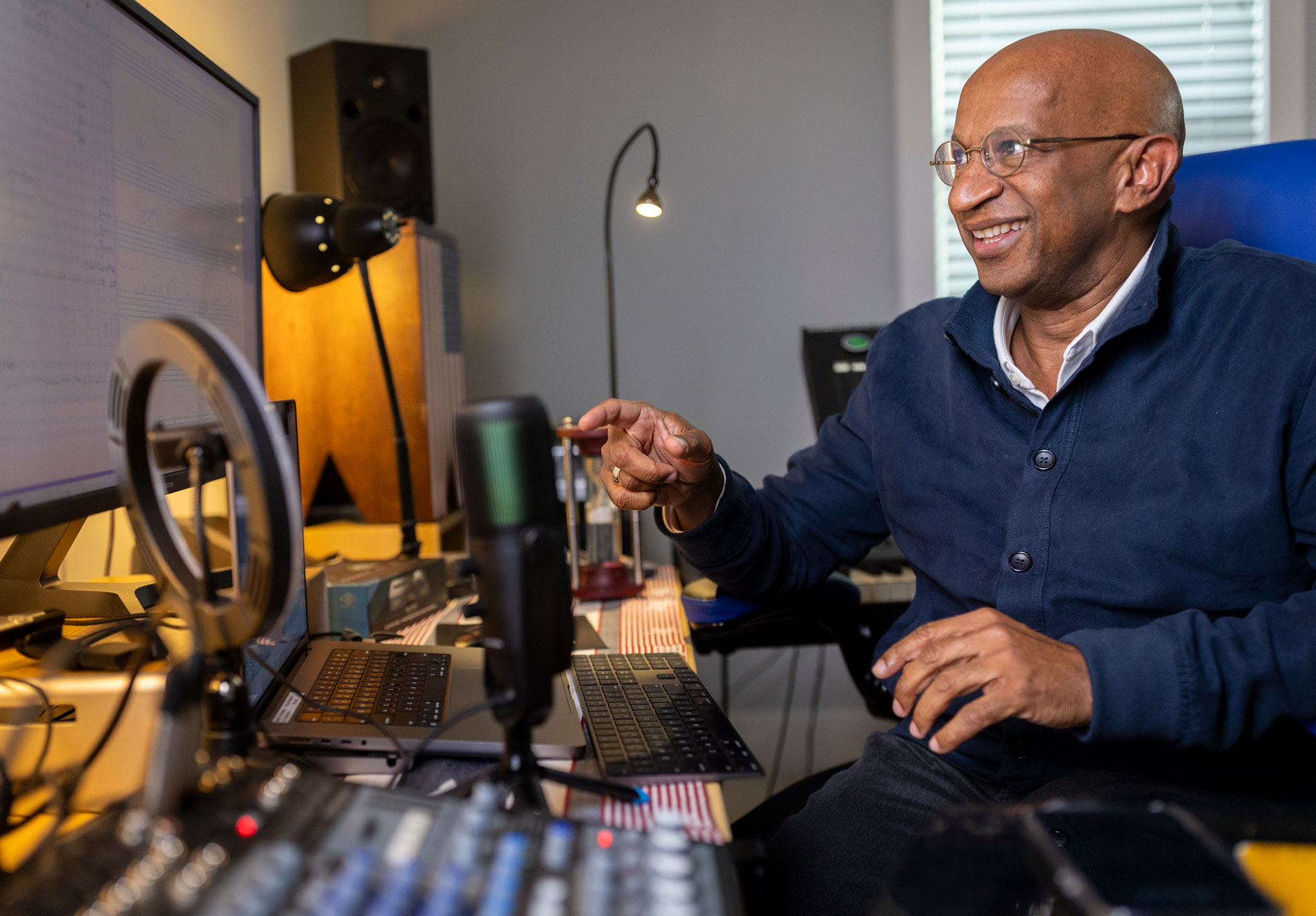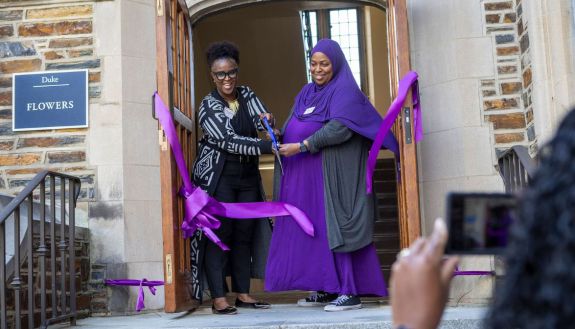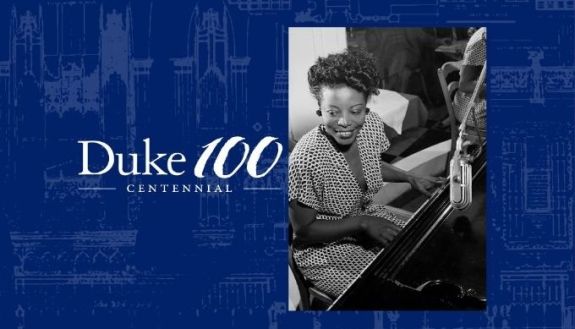Duke Music Professor Anthony Kelley Makes ‘History...’
After discovering jazz legend Mary Lou Williams’ unfinished piece in Duke Archives, Kelley brings the dream to life with the help of the Duke Wind Symphony
A couple years back, Duke music professor Anthony Kelley was watching a documentary about the late jazz great Mary Lou Williams. Near the end, there’s a clip from 1981 featuring Paul Bryan, who directed the Duke Wind Symphony back when Williams, near the end of her life, was teaching at the university.
Kelley was floored. They were playing a piece Williams herself had written, and in the film, Bryan mentions it was in progress.
“Whoa, whoa, whoa!” Kelley thought. Whatever happened to that last work of the jazz giant?
He set out to find it. He asked around, chatted up friends in the music community who had been in the symphony back then, and wrote to the Duke archives. There, he struck gold.

Buried within Bryan’s personal papers, a drab brown folder. Inside, the scrawls and fragments of the composition of a woman known as one of the jazz world’s all-time greats.
A scan of Mary Lou Williams’ original notes for ‘History...’ found in Duke Archives.
Kelley decided someone should complete the unfinished work. And who better than he? After all, Kelley, a Duke graduate himself and current member of the Duke music faculty, is a composer as well. He never met Williams, though his office is just a few doors down from the Mary Duke Biddle Music Building office she occupied while at Duke.
So down the hole he went.
The task was herculean. Kelley wasn’t just finishing a piece of music. He had to represent Williams’ musical voice – like a ghost writer finishing a great novelist’s final work.
Since Kelley, a 1987 Duke graduate, never knew Williams, he got to work the best way he knew how: to listen, and listen, and listen some more. He estimates that he immersed himself in at least 70 hours of her music; he also watched documentaries and read three biographies – two about her and the third of Paul Bryan, the wind symphony conductor while Williams was at Duke.
“She had the heart of a teacher and the mind of a virtuoso composer,” Kelley said. “I listened so much, there are things I know she would disagree with. She was a far more experimental composer than this piece reflects.”
Kelley wasn’t flying entirely blind. Some of Williams’ sections were largely finished compositions, while others were not much more than ideas scrawled on paper. But it gave Kelley a flavor of how her brain was working. And since she had named the sections, he had an idea of the narrative arc. It would start with an introduction and included sections called “Suffering,” “Spiritual,” “Ragtime” and “Gospel.”

With the music at hand and those named sections, Kelley saw an emotional journey. The beginning – “Suffering,” is a tale of enslavement, dark and discordant. In five more twists and turns, the piece ends with the triumphant gospel section. (After hearing a preview performance of the first draft of the piece by the New World Symphony in Miami in February, Kelley decided that the piece would benefit from a more grounded middle section, so he added a blues section as a central anchor of the work.)

“In her mind, I think she wants music to be a big, human story,” Kelley says. “It starts with some dissonance but gradually comes into focus and shows the comfort of human interaction. She was trying to write something a bit bigger, that let jazz connect to a larger world of music.”
In all, Kelley produced 360 measures of music for 37 different instruments.
On April 13, it became real.



Kelley worked with the Duke University Wind Symphony and its director Verena Mösenbichler-Bryant to bring the completed composition to life.
That’s when it was performed by the Duke Wind Symphony – a fitting coda to this musical journey, since that same ensemble rehearsed it originally in 1981.
“Professor Kelley was able to capture what she intended and because he was inspired by so many of her other works, he had really dug deep and made sure he captured her in the music,” said Verena Mösenbichler-Bryant, the director of the Duke University Wind Symphony. “He has done incredible research, and it does sound really authentic.”
It’s a project Kelley could not have expected. “I did not see it coming in my life. It is an honor of a lifetime,” he said. “To have met her would have been even more of an honor. I am truly trying to honor her presence and her majesty at Duke, particularly with every note I tried to write for this piece. But to me, it's really important work because it also allows the world to see where she was on the whole journey. How often do we hear the final statement of anyone?”
“Professor Kelley was able to capture what she intended and because he was inspired by so many of her other works, he had really dug deep and made sure he captured her in the music.”
Verena Mösenbichler-Bryant, director, Duke University Wind Symphony


